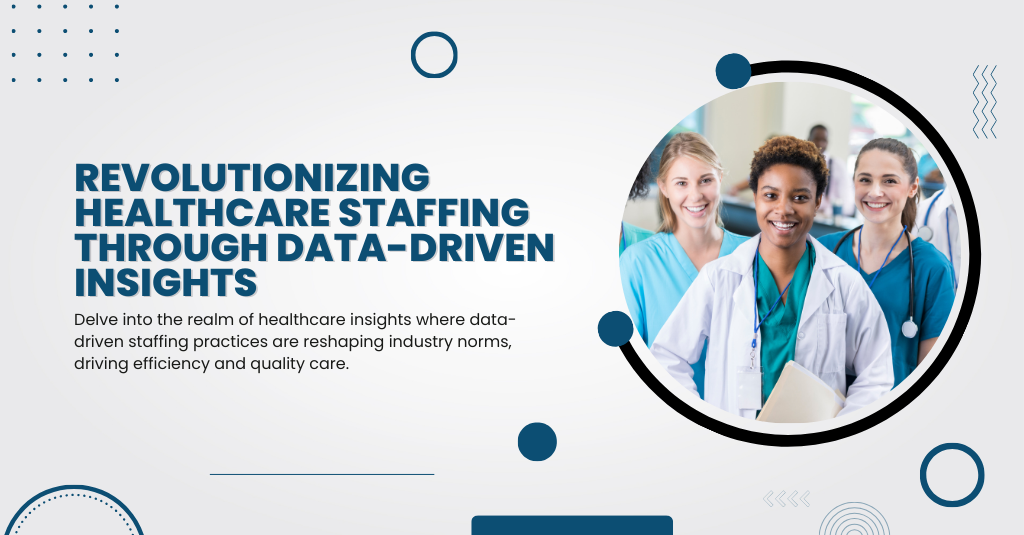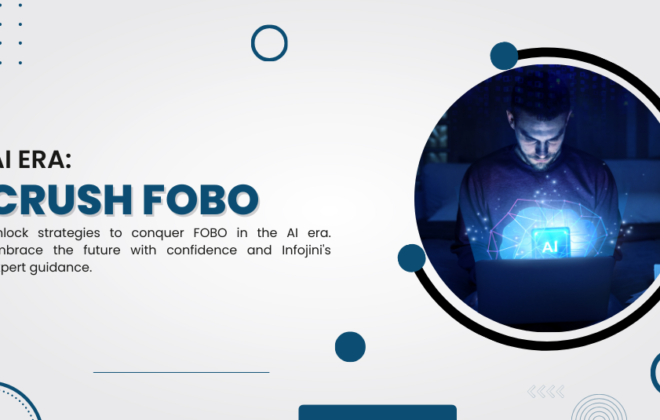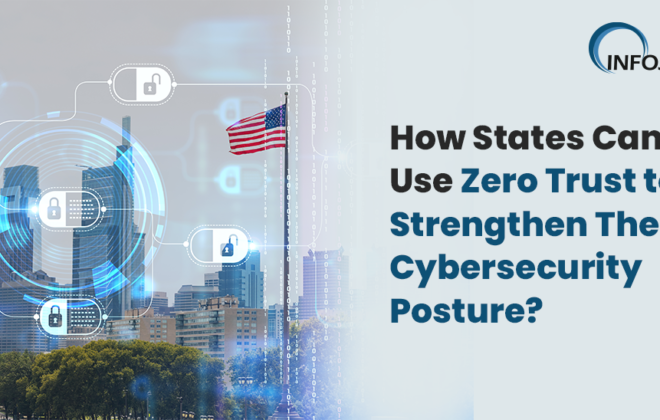Revolutionizing Healthcare Staffing Through Data-Driven Insights
In the fast-paced realm of healthcare, where every choice carries weight in patient outcomes, the infusion of data-driven methodologies emerges as a beacon of progress, guiding institutions towards unparalleled efficiency and excellence. Imagine a healthcare landscape where staffing transcends mere logistics to become a harmonious blend of data analytics and predictive modeling. This exploration takes us deep into the core of this evolution, unveiling the profound impact of data-driven staffing in healthcare. From its historical roots to its present-day applications, we embark on a journey through the evolution of healthcare staffing, shedding light on the path to optimized operations and enriched patient experiences. Let’s dive into this critical topic, where the fusion of data and healthcare not only ensures efficiency but also heralds a new era of compassionate, patient-centric care.
Unlocking the Potential of Data in Healthcare Staffing
The transition towards data-driven staffing in healthcare isn’t a recent development but rather the culmination of years of evolving strategies and technological advancements. Initially, healthcare staffing relied heavily on manual processes and intuition-driven decisions. However, with the proliferation of healthcare data, there arose a need for more sophisticated approaches. Thus began the integration of data-driven strategies, starting with basic data analysis and evolving into the advanced predictive modeling and analytics we witness today.
Optimizing Contingent Labor for Patient-Centric Care
Download Now!
Today, data-driven staffing signifies a paradigm shift in how healthcare institutions approach workforce management. At its essence, this approach harnesses vast datasets encompassing variables such as patient acuity, staff qualifications, historical staffing patterns, and regulatory requirements. By leveraging advanced analytics and predictive modeling, healthcare organizations gain actionable insights into staffing needs, enabling them to optimize resource allocation, streamline workflow processes, and ultimately enhance the quality of patient care. This evolution underscores the importance of data-driven strategies in addressing the multifaceted challenges of modern healthcare staffing, propelling the industry towards greater efficiency and effectiveness.
Exploring the Advantages and Benefits
Enhanced Efficiency and Productivity: At the core of data-driven staffing lies the ability to allocate resources with precision, minimizing inefficiencies and enhancing productivity. According to a recent McKinsey report, healthcare institutions embracing data-driven staffing can achieve up to a 20% improvement in operational efficiency. By utilizing predictive analytics, healthcare organizations can forecast staffing needs with unprecedented accuracy, considering factors such as patient volumes, acuity levels, and seasonal variations. Armed with this insight, healthcare administrators can craft schedules that optimize staff deployment, ensuring that the right personnel are available at the right time to address patient needs.
Improved Patient Outcomes: Adequate staffing levels directly correlate with positive patient outcomes. Through data-driven insights, healthcare facilities can strategically allocate staffing resources to critical areas such as emergency departments, intensive care units, and surgical suites. According to a study published in the Journal of Nursing Administration, optimized nurse staffing levels are associated with a 25% reduction in patient mortality rates. By ensuring these departments are adequately staffed, hospitals can reduce wait times, minimize the risk of medical errors, and enhance overall patient satisfaction.
Driving Cost Savings and Resource Allocation Efficiencies: In addition to improving patient care, data-driven staffing can yield significant cost savings for healthcare organizations. By accurately forecasting staffing needs, hospitals can minimize unnecessary expenditures on overtime pay, agency staffing, and temporary labor. Moreover, by aligning staffing levels with patient demand, healthcare facilities can maximize resource utilization, ensuring that budgetary resources are allocated where they are most needed. A Deloitte study found that hospitals can achieve up to a 15% reduction in labor costs through effective workforce optimization. This not only reduces operational costs but also enables organizations to redirect resources towards strategic initiatives such as staff training, infrastructure upgrades, and quality improvement programs.
Addressing Challenges and Considerations
While the benefits of data-driven staffing are evident, implementing such initiatives poses challenges. Key considerations include:
Ensuring Data Quality and Integration: The success of data-driven staffing initiatives hinges on the availability of accurate, reliable, and timely data. Healthcare organizations must invest in robust data infrastructure, interoperability solutions, and data governance frameworks to ensure data is collected, stored, and analyzed consistently. Moreover, integrating data from disparate sources such as electronic health records, workforce management systems, and financial databases presents additional challenges that must be addressed to realize the full potential of data-driven staffing.
Fostering Staff Adoption and Training: Successful implementation of data-driven staffing requires more than technology—it necessitates a cultural shift within healthcare organizations. Staff must be educated and empowered to leverage data-driven insights in their decision-making processes. This may entail investment in training programs, change management initiatives, and ongoing support to ensure staff are comfortable and proficient in using data analytics tools and platforms.
Ready to Optimize Your Healthcare Compliance?
Book A Meeting Now!
How Infojini Can Drive Transformation
Tailored Solutions: At Infojini, we provide customized data analytics solutions tailored to your organization’s unique needs and goals. Whether you seek to optimize staffing levels, improve operational efficiency, or enhance patient outcomes, our team of experts can design a solution that aligns with your requirements.
Advanced Predictive Models: Leveraging advanced predictive modeling techniques, we accurately forecast staffing needs to ensure optimal resource allocation. By analyzing historical data, trends, and patterns, we offer actionable insights that enable you to make informed staffing decisions and drive better outcomes for your organization.
Cutting-Edge Analytics Platforms: Our state-of-the-art analytics platforms empower organizations to make data-driven decisions with confidence. With intuitive interfaces, robust reporting capabilities, and real-time dashboards, you can gain visibility into key performance metrics, track progress towards goals, and identify areas for improvement.
Ongoing Support and Training: At Infojini, we believe successful implementation is just the beginning of your journey towards data-driven excellence. That’s why we provide comprehensive support and training to ensure your staff are equipped to leverage data effectively. From on-site training sessions to remote support and troubleshooting, we’re here to help you every step of the way.
Conclusion
In the ever-evolving landscape of healthcare, the adoption of data-driven staffing strategies isn’t just a choice—it’s a necessity for organizations striving to navigate the complexities of modern healthcare delivery. As we’ve explored, the transformative power of data analytics and predictive modeling holds the key to unlocking unprecedented levels of efficiency, effectiveness, and quality in staffing management. Now, more than ever, healthcare institutions must embrace this paradigm shift to optimize resource allocation, streamline operations, and ultimately deliver superior patient care.
With each passing day, the demands on healthcare systems grow more complex, necessitating innovative solutions to meet the evolving needs of patients and staff alike. Data-driven staffing offers a beacon of hope in this landscape, providing a roadmap towards resilience, agility, and patient-centered care. As we stand on the cusp of this transformative era, the question arises: Will your organization seize the opportunity to harness the power of data or risk being left behind in a rapidly evolving healthcare landscape? The time to act is now. Embrace data-driven staffing, and together, let us shape a future where every decision is driven by insights, every action is optimized, and every patient receives the care they deserve.
Growing Nursing Shortage: Causes and Solutions
- What are some of the main causes of the nursing shortage in the United States?
- How has the COVID-19 pandemic exacerbated the nursing shortage?
- What role does Infojini play in solving the nursing shortage and supporting healthcare facilities?
Subscribe For Updates
Categories
- Accountant
- AI
- Automation
- Awards and Recognitions
- Blue Collar Staffing
- Burnouts
- Campus Recruiting
- Cloud
- Co-Ops agreements
- Company Culture
- Compliance
- contingent workforce
- Contingent Workforce
- COVID-19
- Cyber Security Staffing
- Data Strategy
- Digital Transformation
- direct sourcing
- Distributed Workforce
- Diversity
- Diversity & Inclusion
- Economy
- Events & Conferences
- fleet industry
- Gig Economy
- Girls in Tech
- Global Talent Research and Staffing
- Government
- Healthcare
- Healthcare Staffing
- Hiring Process
- Hiring Trends
- Home Helathcare
- HR
- HR Practices
- HR Tech
- IT
- Labor Shortages
- Life Science
- Local Governments
- News
- Nursing
- Payroll Staffing
- Public Sectors
- Recruiting
- Remote Work
- Skill Gap
- SMB Hiring
- Snowflake
- Staffing
- Staffing Augmentation
- Staffing Challenges
- Talent ROI
- Tech Staffing
- Technology
- Tips & tricks
- Total Talent Management
- UI/UX Design
- Uncategorized
- Veteran Staffing
- Veterans Hiring
- Veterans Hiring
- Workforce Management
Recent Posts
- Automation in Recruiting: From Chatbots to Predictive Screening
- Gig Economy Expansion: The Impact on Talent Pools and Business Models
- Skills-Based Hiring: Why Credentials Alone Don’t Cut It in 2025
- Procurement 3.0: AI & Intelligent Automation in 2025
- Q3 Is Here: Is Your Contingent Workforce Strategy Falling Behind?
Newsletter
Archive
- September 2025
- August 2025
- June 2025
- April 2025
- March 2025
- December 2024
- November 2024
- October 2024
- September 2024
- August 2024
- July 2024
- June 2024
- May 2024
- April 2024
- March 2024
- February 2024
- January 2024
- December 2023
- November 2023
- October 2023
- September 2023
- August 2023
- July 2023
- June 2023
- May 2023
- April 2023
- March 2023
- February 2023
- December 2022
- November 2022
- October 2022
- September 2022
- August 2022
- July 2022
- June 2022
- November 2021
- October 2021
- September 2021
- August 2021
- July 2021
- June 2021
- May 2021
- April 2021
- March 2021
- February 2021
- January 2021
- December 2020
- November 2020
- October 2020
- September 2020
- August 2020
- July 2020
- June 2020
- May 2020
- April 2020
- March 2020
- February 2020
- January 2020
- December 2019
- November 2019
- October 2019
- September 2019
- August 2019
- July 2019
- June 2019
- May 2019
- January 2019
- December 2018
- November 2018
- October 2018
- September 2018
- August 2018
- July 2018
- June 2018
- May 2018
- April 2018
- March 2018
- February 2018
- January 2018
- December 2017
- November 2017
- October 2017
- September 2017
- August 2017
- July 2017
- June 2017
- May 2017
- November 2016
- October 2016




